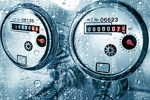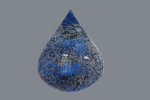ARTICLES BY KEVIN WESTERLING
-
2026 Water Utility Outlook: Regulation, AI, And Resilience In The Face Of Scarcity11/12/2025Global Water Outcomes expert notes that “water utilities are facing unprecedented challenges and opportunities,” citing the role of digital solutions moving forward.
-
HAAs In The EU: Monitoring For Haloacetic Acids Under The Drinking Water Directive11/7/2025In this Q&A, Dr. Elke Süss of Metrohm addresses the urgent need for haloacetic acid testing in response to “one of the most significant updates to EU drinking water monitoring in recent years.”
-
When Chemistry Meets Water Innovation10/30/2025
Nobel-winning molecular materials are poised to reinvent purification, desalination, and reuse.
-
Securing Smart Water9/5/2025
The digital transformation of utilities is necessary and inevitable but also innately vulnerable to bad actors. It's time to discuss prioritizing cybersecurity.
-
A New Power Paradigm For Wastewater Utilities?7/3/2025
Renewable energy is great for the environment. Are power purchase agreements great for wastewater treatment operations?
-
Homing In On Leaks: Rethinking AMI's Role In Water Conservation5/7/2025New research indicates that the targeted deployment of advanced metering infrastructure (AMI) in leak-prone households, leveraging near real-time water use monitoring, could maximize their value.
-
Building Back Better?5/2/2025
Every four years, America gets a fresh reminder of where we stand as a nation, for better or worse. What have we reaped this time around?
-
Cybersecurity For The Win: How Water Utilities Can Embrace Digital Technology3/6/2025
Water and wastewater system operators are known to be a careful lot. Tightly regulated by the U.S. EPA and state agencies — and committed to public health — they cannot afford mistakes. This often results in "tried-and-true" methodologies winning out over innovative solutions, but the incredible upside offered by digital technologies has encouraged a wave of cyber adoption. Almost cruelly, it comes with cyber threats.
-
Closing The Workforce Skills Gap On Artificial Intelligence And Machine Learning At Water Utilities2/21/2025Although artificial intelligence (AI) and machine learning (ML) have been under development and talked about for years, the practical implementation of these technologies came fast and furious. Now, with their rapid growth across all industries, many are feeling overwhelmed — especially water workers. This Q&A explores how and why utilities should embrace AI and ML.
-
Building Tomorrow's Wastewater Treatment Systems... And Workforce1/17/2025
Engineering Tomorrow, a national education nonprofit dedicated to fostering a more diverse and expansive engineering workforce, recently engaged thousands of students across the country in an interactive lab on wastewater treatment and related careers in partnership with Engineers Without Borders USA.
-
2025 Water Forecast: Transition, Changes, And Trends1/7/2025Hmmm … what’s new for 2025? That's asked with a hint of knowing sarcasm, as the incoming presidential administration promises to disrupt the status quo. The change in direction for environmental policy, including impacts on regulations as well as traditional and human infrastructure, has yet to fully reveal itself.
-
Monitoring Know-How For PFAS Regulations10/31/2024
A Q&A to explain and resolve issues confronting water suppliers as they endeavor to comply with the monitoring requirements of federal PFAS regulations.
-
Clearing LCRI Hurdles10/31/2024Assessing what lies ahead in the 10-year race to go lead-free, otherwise known as the Lead and Copper Rule Improvements (LCRI).
-
Innovative PFAS Treatment Proves Less Is More10/30/2024
A new PFAS treatment system from the University of British Columbia (UBC) features a patented UV catalyst that requires only minimal light, making it much more energy-efficient. Learn more from two of the principals involved in its development.















